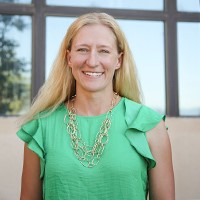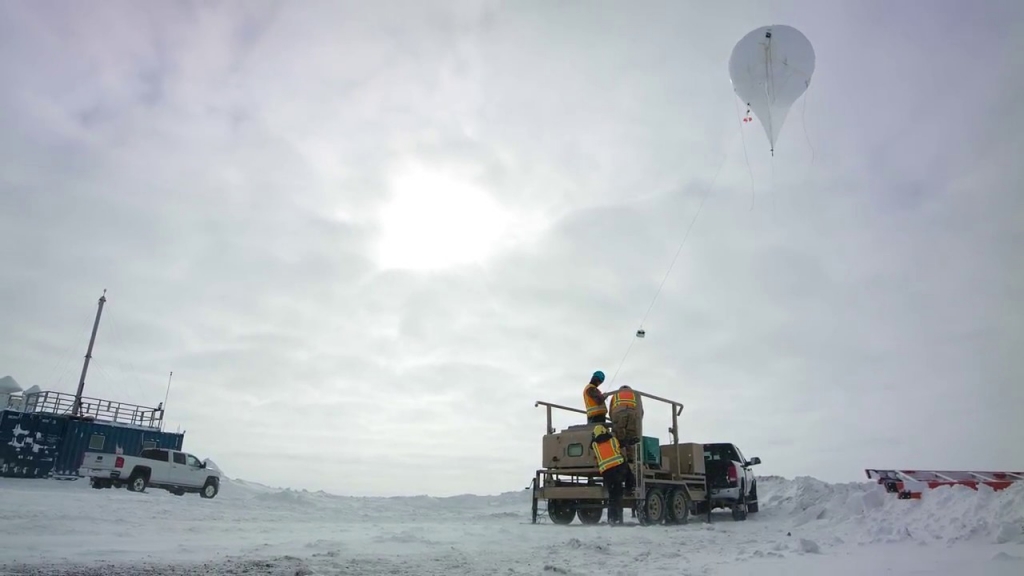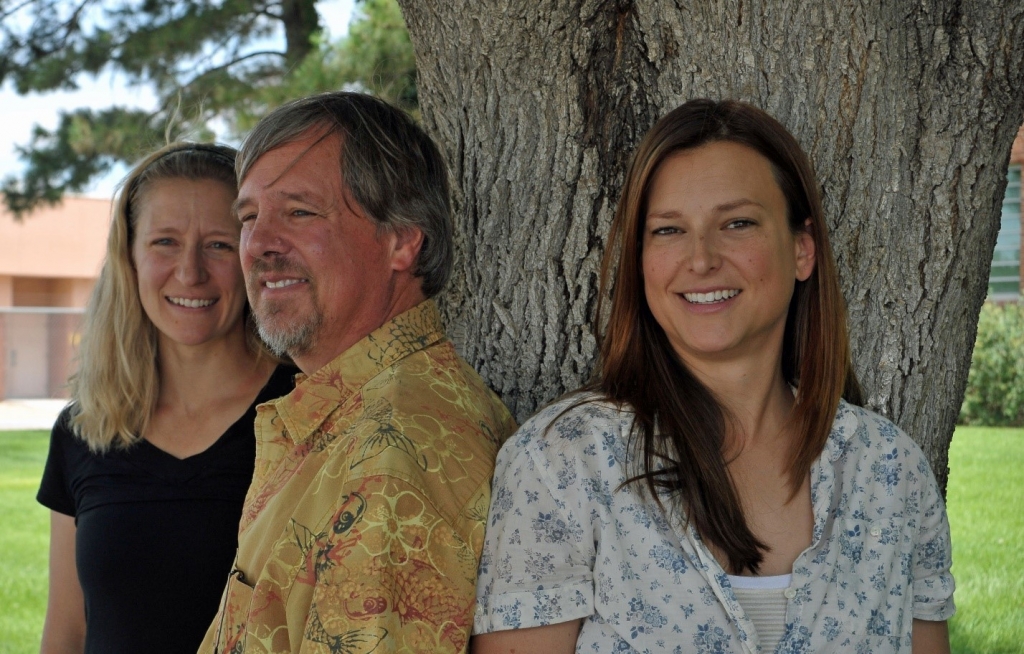UEC Profile: ‘I Found Myself Wanting to Know More’
Published: 23 July 2018
Pursuing the best way to merge regional and global models keeps Erika Roesler rapt and running
This is the seventh article in a series of profiles on members of the ARM User Executive Committee (UEC).

As an undergraduate studying physics and astronomy at Northern Arizona University, Erika Roesler would settle in behind a telescope for long nighttime looks at outer space. (Comets were an early interest.)
However, she says, “Clouds kept getting in the way of the stars. They kept killing the nights you planned.”
And during a New Mexico fellowship back then, when Roesler tried solar astronomy observations—a daytime pursuit—there they were again: clouds that blocked her view.
Years later, clouds are still getting in the way, but Roesler (pronounced “RACE-ler”) loves it when they do. She thinks about clouds every day, and how to represent them in models, as an atmospheric scientist at Sandia National Laboratories in New Mexico.
Her research interests include the emerging quest among modelers known as “regional refinement.” The goal is to integrate three entities: discrete local column measurements from the field; regional models that use high-resolution data; and global models that reflect statistically coarser simulations.
Marry observational data with these two scales, modelers say, and earth system prediction might one day have the precision of meteorology, which simulates increasingly accurate predictions of near-future atmospheric conditions.
Roesler is an experienced user of data from Oliktok Point and Utqiaġvik (formerly Barrow) in northern Alaska. Both of these Sandia-managed observation sites are part of the Atmospheric Radiation Measurement (ARM) user facility, which manages mobile and fixed observatories in critical regions of the world to gather, process, and archive atmospheric data for the U.S. Department of Energy (DOE).
Reversing ‘Smear’ in Models
With regional refinement, modelers use high resolution in a specific area of interest, not globally—though global high-resolution runs are possible.
“It really comes down to resources,” says Roesler. “It’s so expensive to run an institutional supercomputer that you don’t get an answer in a meaningful amount of time. It would take months to get (global) simulations.”
In the meantime, regional refinement is a way to “peer into” what those global models might show, she adds. “It’s a way to get a vision or a preview or some sort of insight into what global high-resolution simulation might look like over a stagnant patch of high resolution.”
To illustrate, Roesler uses the example of the Cascade Mountains that divide the wet, precipitation-heavy western side of Washington state and the state’s semi-arid eastern side.
“In a low-resolution model, the topography of those areas would be smeared,” says Roesler. “But if you improve that resolution over a larger area, the model would respond” by reflecting the region’s actual conditions.
Such a refined resolution would show the western snow and rain that observations record, along with the far drier conditions eastward. In a coarser model, she says, those distinct conditions “would be averaged out.”
The promise of regionally refined models, says Roesler, is “getting better answers for the trajectory of the climate.”
A user of ARM data since her graduate school days (“and a fan ever since,” she says), Roesler is also the designated “young investigator” representative on ARM’s User Executive Committee. The group bridges the gap between data users and ARM leadership, and its members reach out to scientists whose work the data could benefit.
“I would encourage early career people to be vocal and to seek help from the User Executive Committee,” she says. “Everybody’s very approachable and helpful.”
Science by Tether

Besides regional refinement, Roesler is captivated by another research drive at Sandia: boundary layer clouds in the Arctic, which were the subject of her PhD dissertation in 2012. Sandia is exploring these clouds by means of tethered balloons sometimes teamed with unmanned aerial systems.
“There are not a lot of measurements of these clouds to date,” she says, despite their importance to the Earth’s energy budget and—in the Arctic—despite the accelerating pace of atmospheric changes. “We just don’t understand these clouds completely.”
Roesler was principal investigator of a 2016 mini-campaign at Oliktok Point on the shores of the frigid Beaufort Sea, intended to do an aerial assessment of liquid in clouds.
During a follow-up in the fall of 2017, she visited Oliktok to help fellow Sandia scientists collect in situ data from tethersondes. These sensors provide a vertical profile of temperature, pressure, wind speed, and other measures, including data on supercooled liquid water content.
The sensors are strung along tethered balloons 13 feet in diameter and fitted with 35-meter-square “helikites” that help steer the balloon through the clouds. A Sandia video captured the whole process in 2017.
Despite being challenged by ice loading, helium diffusion, and other factors, balloons at Oliktok are authorized to go as high as 6,000 feet. They gather in valuable—and rare—vertical-resolution data that will improve process-level understanding of mixed-phase clouds in the Arctic.
“I hope we can continue to do that,” says Roesler of the balloon flights.
To date, most measurements of such clouds have come from radiometric instruments that send defined pulses of energy skyward. They bounce back as a form of energy from which scientists make calculated assumptions about the physics and materiality of these complex, multilayered clouds.
Tethered balloons, on the other hand, ascend through such clouds at measured rates, taking measurements of supercooled liquid water and other factors, layer by cloud layer, for several hours at a time.
“We take in situ measurements inside the clouds,” says Roesler, “and use those data to see how a model and its parameterizations are doing.”
Her colleagues Joe Hardesty, Dari Dexheimer, and others at Sandia “are pushing these instruments to new places,” she says. “I’m excited about unmanned platforms and how far we can take them.”
From Outer Space to Clouds
Roesler grew up in little Brigham City on the rural western slope of the Wellsville Mountains in northern Utah. Her father was a football coach and former math teacher, and her mother taught typing.
“I liked math,” she says of her days at Box Elder High School. An interest in math seemed right in sync with her father’s advice to her and two elder siblings: “You’re going to get a job,” Roesler remembers him saying, “if you go into engineering.”
Her brother and sister both went off to the University of Wyoming to do just that.
“But I rebelled,” says Roesler. “I went into physics and astronomy.”
The Northern Arizona University program was small and intensive, and accommodating to undergraduates who were elsewhere often deprived of telescope time. “You could get a lot of attention,” she says.
After her 2004 bachelor’s degree, however, “I wasn’t so enchanted with astronomy anymore,” says Roesler. “I had a what-should-I-do moment after college.”
A Tailpipe Epiphany
Love intervened. Roesler followed her husband, Eric Harding, to the University of Michigan, where he was enrolled in a PhD program in applied physics. (Today, he is also at Sandia, where he specializes in plasma physics.)
Roesler joined a master’s degree program in physics and astronomy at Eastern Michigan University, where an internship changed her life. It was at the Environmental Protection Agency’s National Fuel and Vehicle Emissions Laboratory in Ann Arbor, and transformed a student of the stars into a student of aerosols and gases.
“The science behind it was really interesting,” says Roesler of the internship. “I found myself wanting to know more about what came out of the tailpipe.”
When aerosols emerge from a source, do they stay dry or get wet? “You find yourself domino-ing to the next step,” she says of a new passion that soon took her to clouds, hurricanes, and “an interest in atmospheric science.”
So after finishing her master’s degree in 2006, Roesler enrolled in a doctoral program in atmospheric science at the University of Michigan. There she was influenced by three important mentors: cloud-aerosols scientist Joyce Penner; climate-impacts researcher Richard Rood; and cloud microphysicist Derek Posselt.
And On to New Mexico

When her husband got a job at Sandia in 2009, Roesler was pregnant with their first child. So she moved too, and finished her Michigan PhD from New Mexico, thanks to technologies such as Skype.
She also met another mentor, Sandia mathematician Mark Taylor. He introduced her to the culture of the lab and got her work that introduced her to modeling communities in the atmospheric sciences, and to the concept of regional refinement.
Today, Taylor is chief computational scientist for DOE’s Energy Exascale Earth System Model (E3SM) project, which aims to develop and expand high-resolution, coupled earth system models.
Now six years beyond her PhD, and into a feverish round of research, Roesler says her career is all good. “With the help of ARM and the modeling community, it has been so far a very rich and interesting and a never-boring science job.”
Does she miss those dreamy nights behind a telescope, searching for comets?
“No—I don’t get enough sleep as it is,” says Roesler, now the mother of four sons. “I have not slept since 2009.”
The ARM Climate Research Facility is a DOE Office of Science user facility. The ARM Facility is operated by nine DOE national laboratories, including Sandia National Laboratories.
Keep up with the Atmospheric Observer
Updates on ARM news, events, and opportunities delivered to your inbox
ARM User Profile
ARM welcomes users from all institutions and nations. A free ARM user account is needed to access ARM data.


















